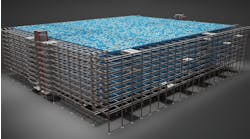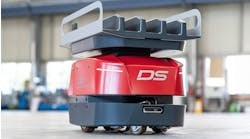Author: Jeanna Smialek
President Donald Trump is pushing to revive American manufacturing and bring back U.S. factory jobs. He may be able to deliver on half of that goal.
American manufacturing could be poised to rebound as technological disruption shakes up global production chains, but that will offer little relief to displaced factory workers, according to new research by the McKinsey Global Institute.
For years, companies have searched for cheap labor, shipping production jobs out of advanced nations and toward their developing counterparts. Now, McKinsey sees conditions changing in a way that could favor U.S. producers: automation is weakening the case for labor arbitrage as wages rise in emerging market economies and developing market residents are coalescing into a new consumer class, among other factors.
While the U.S. could seize on those manufacturing growth opportunities, especially if the government and companies invest to make production more competitive, there are catches. Importantly, production might bounce back without bringing a lot of jobs in tow.
“Even if we rebuild factories here and you build plants here, they’re just not going to employ thousands of people -- that just doesn’t happen,” said report co-author and McKinsey Global Institute Director James Manyika. “Find a factory anywhere in the world built in the last 5 years -- not many people work there.”
Below, in charts, is a summary of McKinsey’s look at where American manufacturing stands -- and where it’s headed.
As you can see in the chart above, the U.S. long led the world in terms of manufacturing value-added, but it’s been overtaken by China. Still, it remains near the top of the ranking, emphasizing how important production remains to the U.S. economy.
A run through headline economic indicators shows just how much manufacturing punches above its weight when it comes to output versus employment. It’s especially important to research and development, exports and corporate profits -- even though it makes up a relatively small share of U.S. jobs. ‘We shouldn’t look to manufacturing to solve the nation’s jobs problem, because it won’t,” Manyika said.
The move away from factories as a major source of employment is something of a sea change. Manufacturing used to offer lots of jobs, many of them union positions that served as a gateway into America’s middle class for people with a high school diploma or less. The type of manufacturing jobs that McKinsey sees evolving are not only fewer, they’re also higher-skilled.
They’ll disproportionately benefit communities that have the infrastructure and knowledge base to harness the power of digital technologies. Those may not be the same as the often-rural places that have been hollowed out by manufacturing’s decline, Manyika said.
Looking at the likelihood of automation by industry, McKinsey finds that factory employment ranks near the top of the list -- behind accommodation and food services and just ahead of agriculture. Investment in re-training could help employees who are displaced, Manyika said, but it won’t happen overnight.
“It’s a bit of a heavy lift -- in the skilling, the investment in the right places, the right skills -- it’s not going to happen by itself,” he said.










